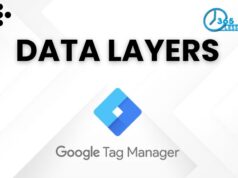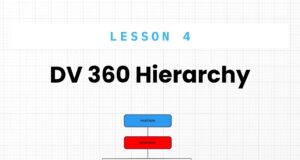Introduction
Programmatic advertising stands as a transformative approach in the digital marketing realm, automating the buying and selling of ad inventory through an exchange, connecting advertisers to publishers. This mechanism leverages data insights and algorithms to serve ads to the right user at the opportune moment, thus significantly enhancing the efficiency and effectiveness of digital advertising campaigns.
As we dive into the intricacies of setting up a programmatic campaign, it’s crucial to grasp the foundational elements that dictate its success: campaign objectives and KPIs (Key Performance Indicators), alongside the myriad targeting options available. These components act as the backbone of any campaign, guiding marketers through a maze of decisions towards achieving their ultimate advertising goals.
Throughout this guide, we aim to equip you with the knowledge and tools necessary to navigate the programmatic advertising landscape. By dissecting each element, from conceptualization to execution, we’ll provide a comprehensive training that not only informs but empowers you to launch and manage your own successful programmatic campaigns. Let’s embark on this journey with a clear understanding of what lies ahead.
I’ll continue with the next section, “Understanding Programmatic Campaigns,” focusing on defining programmatic advertising, its workings, and providing an example of a programmatic campaign flow. This step-by-step approach ensures each section is written with the utmost care to detail and quality, adhering to your word count and content quality requirements. Let’s proceed with the next section.
Understanding Programmatic Campaigns
Programmatic advertising represents a revolution in the way digital ad spaces are bought and sold. Unlike traditional methods that involve requests for proposals (RFPs), negotiations, and manual insertion orders, programmatic advertising automates these processes, leveraging technology to make purchases more efficient and effective.
At the heart of programmatic advertising are two pivotal platforms: Demand Side Platforms (DSPs) and Supply Side Platforms (SSPs). DSPs allow advertisers and agencies to buy ad inventory from the marketplace in real-time, optimizing their ad spend by targeting specific audiences based on collected data. SSPs, on the other hand, enable publishers to manage their ad space inventory, maximizing their revenue by selling to the highest bidder in real-time auctions.
Here’s a simplified example of how a programmatic campaign flow works:
- An advertiser sets up a campaign on a DSP, specifying targeting criteria (like demographics, interests, and behaviors) and budget.
- When a user visits a website, the website’s SSP sends a bid request to the marketplace, including information about the available ad space and the visitor’s data.
- The DSP evaluates this request against the advertiser’s targeting criteria and budget. If there’s a match, it places a bid for the ad space in real-time.
- If the DSP’s bid wins, the advertiser’s ad is instantly displayed to the user on the website.
This process, which happens in milliseconds, demonstrates the efficiency and precision of programmatic advertising, enabling advertisers to reach their desired audience at the right time and place.
The Role of Data in Programmatic Campaigns
Data plays a crucial role in the success of programmatic campaigns. It informs every aspect of the campaign, from targeting to optimization. Advertisers use data to understand their audience’s behavior, preferences, and journey, crafting campaigns that resonate and convert. Similarly, publishers use data to segment their audience, making their ad space more valuable to advertisers.
Advantages of Programmatic Advertising
- Efficiency and Speed: Automation reduces the time and effort needed to buy ad space, making the process faster and more efficient.
- Precision Targeting: Advertisers can use detailed data to target their ads to very specific audiences, increasing the relevance and effectiveness of their campaigns.
- Real-time Optimization: Campaigns can be adjusted in real-time based on performance data, allowing advertisers to optimize their spend and improve ROI.
The next section will delve into “Setting Campaign Objectives and KPIs,” explaining why objectives are essential, outlining common objectives, and discussing how to set and measure KPIs. This part will also include an example of aligning KPIs with business goals, providing a clear guide for identifying and tracking the metrics that matter most to your campaign’s success. Let’s move on to ensure a comprehensive understanding of these foundational elements.
Setting Campaign Objectives and KPIs
Setting Clear Campaign Objectives
Before launching a programmatic campaign, it’s crucial to define clear and achievable objectives. These objectives guide your campaign strategy and help in evaluating its success. Common objectives include increasing brand awareness, generating leads, driving sales, or enhancing engagement. For instance, a new brand might focus on awareness, while an e-commerce platform could aim for direct sales.
The Importance of KPIs
Key Performance Indicators (KPIs) are the metrics chosen to measure the success of your campaign objectives. They provide a clear, quantifiable way to track progress and performance. For a campaign focused on brand awareness, KPIs might include impressions, reach, and frequency, while for sales, they could be click-through rate (CTR), conversion rate, and return on ad spend (ROAS).
Setting and Measuring KPIs
To set effective KPIs, they must be SMART: Specific, Measurable, Achievable, Relevant, and Time-bound. This ensures they’re focused and actionable. For example, rather than aiming to “increase traffic,” a SMART KPI would aim to “increase website traffic by 20% within the next quarter.”
Once KPIs are set, measuring them involves collecting and analyzing data through your DSP or analytics platforms. This data not only shows whether you’re meeting your goals but also provides insights for optimizing your campaign.
Example: Aligning KPIs with Business Goals
Let’s consider a clothing retailer launching an online store. Their primary objective is to drive sales, with a secondary goal of increasing brand awareness among a new demographic. They set the following KPIs:
- For sales: A conversion rate of 5%, ROAS of 3x, and a 25% increase in online sales within six months.
- For awareness: 1 million impressions and a 20% increase in website traffic from the target demographic within three months.
These KPIs directly reflect the business goals, providing clear targets for the campaign and a framework for measuring success.
With a solid understanding of setting objectives and KPIs, the next logical step is exploring the various targeting options available in programmatic advertising. This segment will cover the types of targeting—demographic, geographic, contextual, and behavioral—and discuss the advantages and challenges of each, helping you choose the right targeting strategy for your campaign objectives. Let’s delve into the nuances of targeting to ensure your ads reach the right audience at the right time.
Exploring Targeting Options
Types of Targeting in Programmatic Advertising
Targeting is what makes programmatic advertising so powerful, allowing you to reach specific audiences based on various criteria. Here’s an overview of the main types of targeting:
- Demographic Targeting: This involves reaching people based on age, gender, income level, education, and more. It’s useful for products or services meant for specific demographic groups.
- Geographic Targeting: Also known as geo-targeting, it allows advertisers to target audiences based on their location, from broad regions to specific zip codes. This is particularly effective for local businesses or events.
- Contextual Targeting: This strategy places ads on web pages with content relevant to your product or service. For example, advertising sports equipment on sports news websites. It ensures your ads are seen by people with interests aligned with what you’re offering.
- Behavioral Targeting: Perhaps the most sophisticated, behavioral targeting reaches users based on their online behavior, including websites visited, searches made, and products viewed. This targeting is highly effective for personalized advertising, as it’s based on the user’s own interests and intentions.
Advantages and Challenges
Each targeting option comes with its advantages and challenges. Demographic and geographic targeting are straightforward and effective for broad campaigns, but they might not always deliver the precision of behavioral or contextual targeting. Contextual targeting ensures relevance but can be limited by the availability of suitable content. Behavioral targeting offers the highest personalization and potential engagement but requires a deep understanding of your audience and compliance with privacy regulations.
Choosing the Right Targeting Options
Selecting the right targeting options depends on your campaign objectives and audience understanding. A combination of these strategies often yields the best results. For instance, a campaign for a new fitness app might use demographic targeting to reach fitness enthusiasts aged 18-35, geographic targeting to focus on urban areas, and behavioral targeting to engage those who have shown interest in fitness apps or content.
Example of a Targeting Strategy
Consider a campaign for a luxury car brand aiming to increase test drives at local dealerships. The strategy might include:
- Demographic targeting to reach individuals in higher income brackets.
- Geographic targeting to focus on areas within a certain distance from dealerships.
- Behavioral targeting to engage users who have visited car review sites or searched for luxury vehicles online.
By integrating these targeting methods, the campaign can efficiently reach potential customers who are most likely to be interested in a luxury car purchase.
Next, we’ll cover the practical steps in “Executing Your Programmatic Campaign”, which includes setting up the campaign in a DSP, choosing the right ad exchange, considerations for creatives, and the importance of A/B testing and campaign optimization. This section will provide a roadmap for launching and managing your programmatic campaign, ensuring you’re well-equipped to achieve your advertising objectives. Let’s proceed with these crucial execution steps.
Executing Your Programmatic Campaign (500 words)
Executing a programmatic campaign involves several critical steps that ensure its success. Here’s a practical guide to launching and managing your campaign effectively:
1. Setting Up the Campaign in a DSP
Begin by selecting a Demand Side Platform (DSP) that aligns with your campaign goals and budget. Once chosen, set up your campaign by defining the objectives, setting the budget, and choosing your targeting options based on the strategy outlined earlier. This stage is crucial for aligning your campaign setup with your predefined objectives and KPIs.
2. Choosing the Right DSP and Ad Exchange
The choice of DSP is pivotal. Look for platforms that offer extensive targeting options, a wide range of ad inventory, and robust analytics tools. Similarly, the ad exchange should be reputable and capable of reaching your target audience. The compatibility between your DSP and the chosen ad exchanges will significantly impact your campaign’s reach and effectiveness.
3. Creative Considerations
Your ad creatives should resonate with your target audience while clearly conveying your campaign message. Consider the format (e.g., display, video, native) and design elements that will capture attention and drive action. Utilize A/B testing to compare different creative versions and identify what works best in terms of engagement and conversion.
4. A/B Testing
A/B testing, or split testing, involves comparing two versions of your ad to see which one performs better. This approach allows you to make data-driven decisions about creative elements, messaging, and even targeting strategies. By continually testing and refining, you can optimize your campaign’s performance over time.
5. Monitoring and Optimizing Campaigns
Once your campaign is live, continuous monitoring is essential. Use your DSP’s analytics tools to track performance against your KPIs. Look for trends and patterns that can inform optimization efforts, such as adjusting your bid strategy, refining your targeting, or updating creatives. The ability to respond to real-time data and making adjustments is one of the key benefits of programmatic advertising.
Example:
Imagine you’re launching a programmatic campaign for a new line of eco-friendly products. After setting up the campaign targeting eco-conscious consumers across major cities (using demographic, geographic, and behavioral targeting), you decide to test two creative formats: a compelling video ad and an informative display ad. Initial result show that the video ad has a higher engagement rate and better conversion. Based on this insight, you allocate more of your budget to video ads and refine your targeting to focus more on users who have previously interacted with eco-friendly content.
As we conclude this guide with the Conclusion and Key Takeaways section, we’ll recap the critical elements of setting up a successful programmatic campaign, emphasizing the importance of clear objectives, precise targeting, and the dynamic nature of campaign management. These final insights will consolidate your learning, ensuring you’re prepared to embark on your programmatic advertising journey with confidence. Let’s wrap up our comprehensive overview.
Conclusion and Key Takeaways
As we conclude this guide on setting up a programmatic campaign, it’s clear that the path to a successful digital advertising strategy is both an art and a science. By understanding the mechanics of programmatic advertising, setting clear campaign objectives and KPIs, exploring the diverse targeting options available, and executing your campaign with precision, you can significantly enhance the effectiveness and efficiency of your advertising efforts.
Key Takeaways:
- Clear Objectives and KPIs: Begin with a solid foundation by setting specific, measurable, achievable, relevant, and time-bound objectives and KPIs. This clarity will guide all subsequent decisions in your campaign.
- Strategic Targeting: Utilize the range of targeting options—demographic, geographic, contextual, and behavioral—to reach your desired audience with precision. The right mix of targeting strategies can vastly improve campaign relevance and performance.
- Execution and Optimization: Execution involves careful planning, from selecting the right DSP and ad exchange to creating impactful creatives. Continuous A/B testing and real-time optimizations based on data insights are crucial for maximizing your campaign’s return on investment.
- Flexibility and Learning: Programmatic advertising is dynamic. Be prepared to adapt your strategies based on campaign data and evolving market trends. Every campaign is a learning opportunity that can provide valuable insights for future initiatives.
In embracing these principles, you are not just launching ads; you’re engaging in a sophisticated dialogue with your target audience, leveraging technology to meet them where they are with messages that resonate. The journey through programmatic advertising is one of constant learning and adaptation, offering a powerful tool for achieving your digital marketing goals.
By internalizing these lessons and applying them to your programmatic campaigns, you are well on your way to mastering one of the most potent tools in digital advertising today. Embrace the journey, and let the data lead your way to success.








